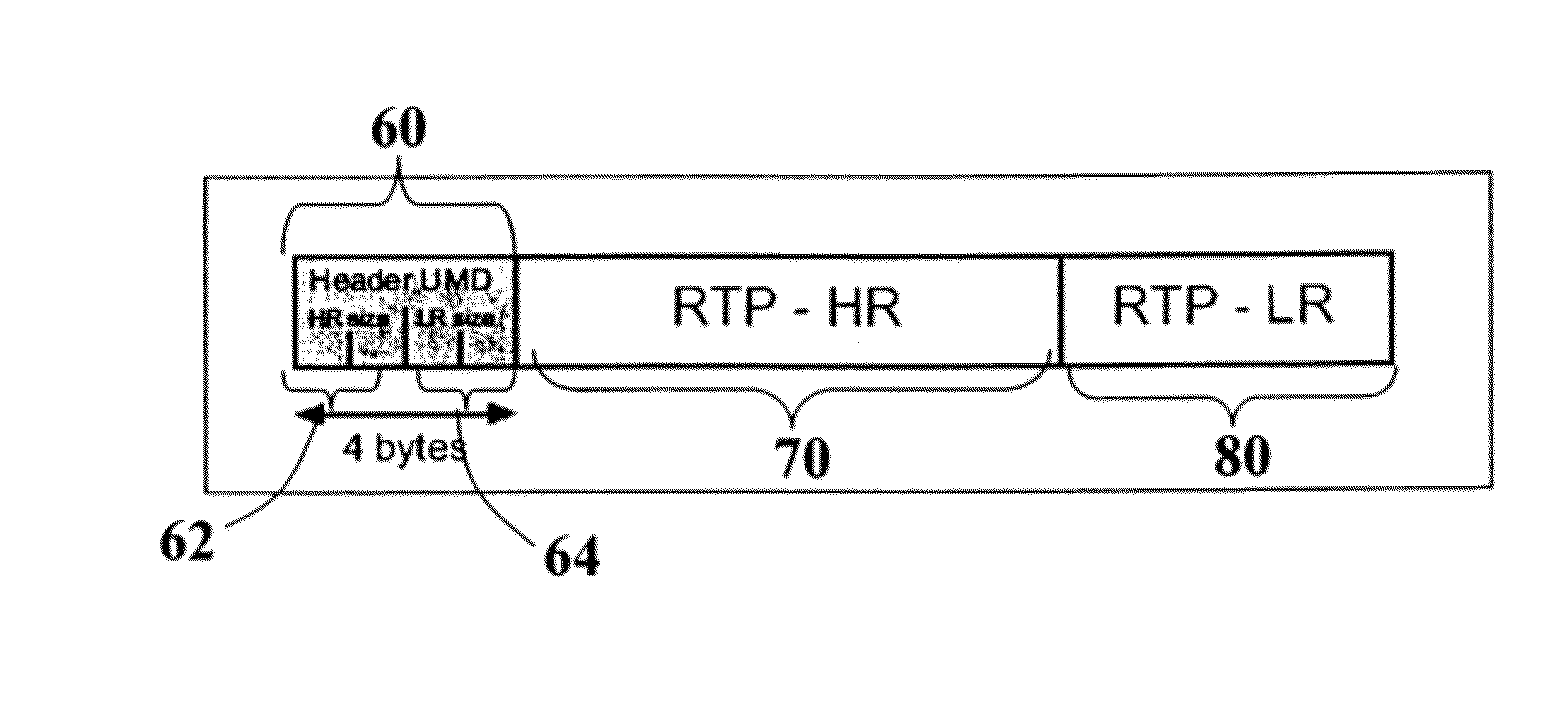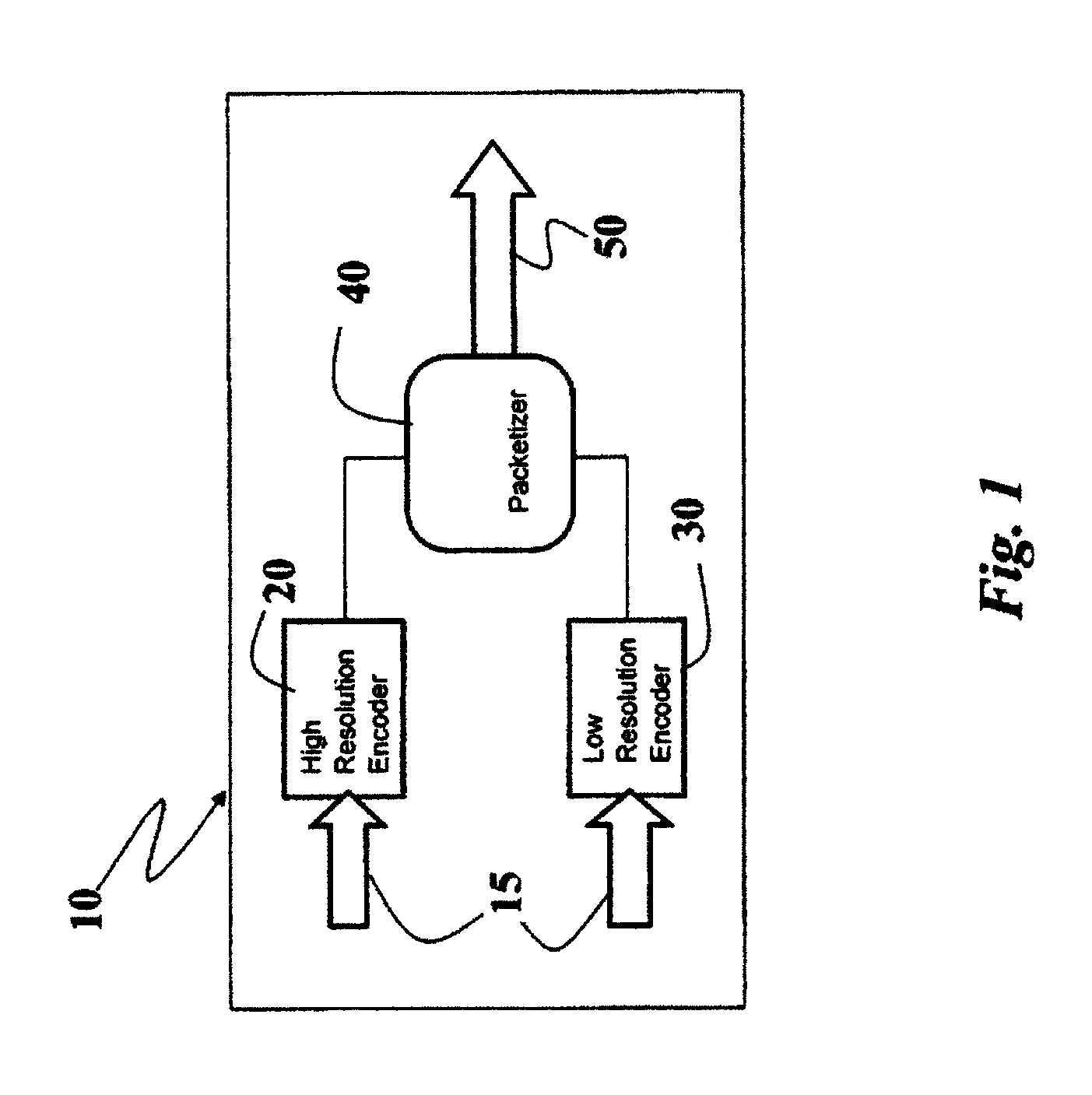Method for encoding signals, related systems and program product therefor
a technology of encoding signals and signal components, applied in the field of encoding signals, can solve the problems of packet loss in video communication over lossy packet networks such as the internet or wireless links, packet loss is hampered by packet loss, video quality severely degrades in presence of lost packets, etc., and achieves the effect of not complicating the network topology
- Summary
- Abstract
- Description
- Claims
- Application Information
AI Technical Summary
Benefits of technology
Problems solved by technology
Method used
Image
Examples
Embodiment Construction
[0046]The solution described herein illustrates a set of techniques based on Unbalanced Multiple Description Coding (UMD) to improve the robustness of video transmissions.
[0047]The exemplary system described herein relies on two descriptions, a HR (High Resolution) description and LR (Low Resolution) description. The High Resolution description has higher quality than the Low Resolution one. The High Resolution and the Low Resolution descriptions are produced by using different encoding parameters.
[0048]The solution described, compared to other techniques based on Unbalanced Multiple Description, makes use of different intra refresh periods (and thus different Group Of Pictures (GOP) structures) for the produced descriptions. In particular the solution proposes to use shorter “intra refresh” period for the Low Resolution description (in order to improve its resilience to packet losses), and higher “intra refresh” period for the High Resolution description (in order to improve coding...
PUM
 Login to View More
Login to View More Abstract
Description
Claims
Application Information
 Login to View More
Login to View More - R&D
- Intellectual Property
- Life Sciences
- Materials
- Tech Scout
- Unparalleled Data Quality
- Higher Quality Content
- 60% Fewer Hallucinations
Browse by: Latest US Patents, China's latest patents, Technical Efficacy Thesaurus, Application Domain, Technology Topic, Popular Technical Reports.
© 2025 PatSnap. All rights reserved.Legal|Privacy policy|Modern Slavery Act Transparency Statement|Sitemap|About US| Contact US: help@patsnap.com



